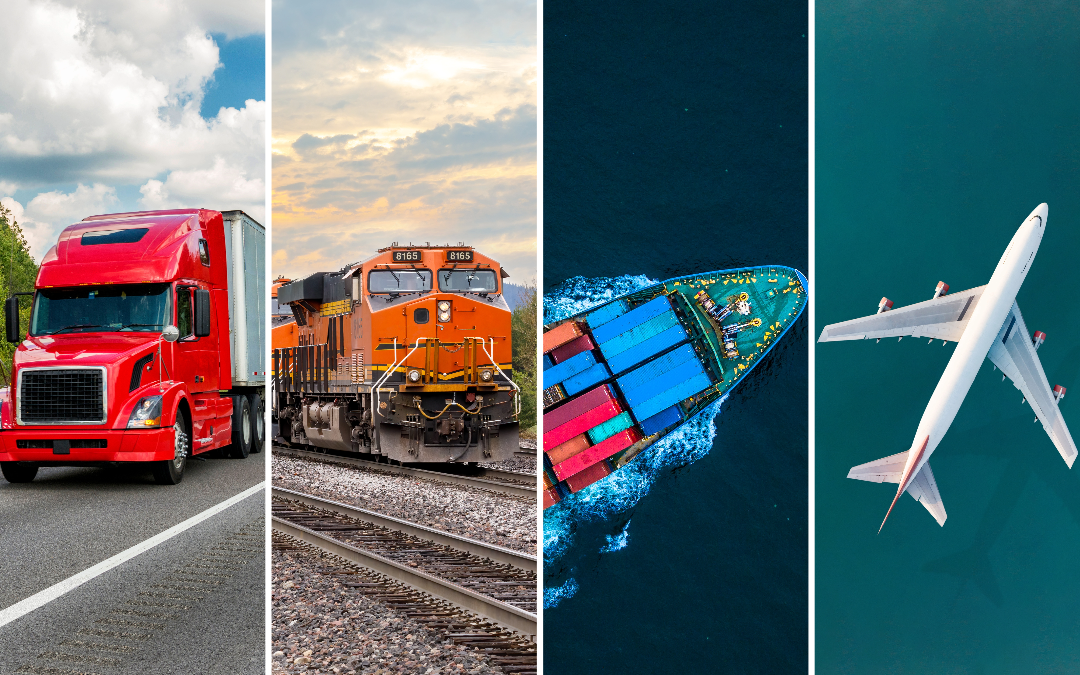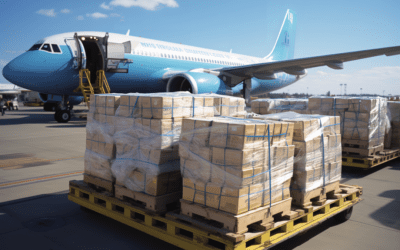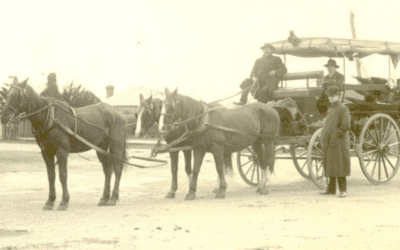What is Intermodal Transportation?
Intermodal transportation moves goods from point A to point B using two different transportation modes. Goods are shipped in steel containers by either trucks, railroads, ships, or air freight.
Intermodal transportation reduces handling risks and creates a flexible and efficient way to ship goods domestically and internationally.
Benefits of Intermodal
Intermodal transportation offers several benefits to companies shipping domestically or internationally. Some of the advantages of using intermodal services include:
- Cost Effectiveness: The combination of two modes offers several advantages, including cost-savings and efficiency. Intermodal transportation can lower transportation costs by saving money on fuel, shipping costs, and travel time.
- Reliability: Another advantage of intermodal is its reliability. When goods are transported in steel containers, it improves the security of the packages. When it’s time to switch transportation modes, the goods can be easily transferred between modes without the need to open or repack the goods.
- Flexibility & Customization: Intermodal transportation can accommodate various items such as hazardous materials, refrigerated goods, or oversized loads. Shippers can also choose the best modes and routes for their products, which benefits companies with unique loads.
Transportation Modes
Intermodal transportation can be classified into four categories based on the modes of transportation involved:
- Railroads: Utilizing railroad transportation is often the most affordable option, especially for domestic transportation. But when exactly is rail intermodal the right call for shipments? Typically, if the goods are between ports far apart, rails can get there more efficiently from one hub to the other.
- Sea: Cargo ships are the most versatile methods for intermodal transportation. They can move freight internationally and domestically and have two container sizes. Ports account for a significant part of the world’s shipments. In 2021, about 1.95 billion metric tons of freight was shipped by container ship.
- Trucks: Often used during the first or final mile of an intermodal journey because drivers can pick up and deliver goods directly to businesses and consumers. This mode makes it easier if the final destination doesn’t have rails, getting the product there efficiently.
- Air: Air freight does use smaller intermodal containers than other modes and is an excellent option for shipments traveling across the globe. This mode is also efficient and can be used for expedited packages or urgent freight.

Domestic & International
Shippers will decide between domestic and international intermodal transportation when choosing a mode. The big difference between the two is that domestic intermodal may arrive from overseas, but the products are transferred to domestic containers after arriving at a port in international containers.
Points of Origin for Intermodal
Transportation hubs in the United States play a vital role in facilitating the flow of goods domestically and internationally. Most facilities are placed strategically and are usually located near critical infrastructure. Some of the most significant intermodal hubs in the U.S. include:
• Chicago, Illinois: Chicago, known as the freight rail hub of North America, handles a significant portion of intermodal traffic. In 2018, Chicago rail facilities handled 6.45 million lifts and over 7.8 million freight cargo containers.
• Los Angeles / Long Beach, California: These twin ports are a crucial gateway for intermodal freight. They handle a substantial volume of intermodal shipping containers arriving from Asia and connect seamlessly to rail and intermodal truck networks. In 2021, these ports moved more than 10 million import containers.
- Houston, Texas: Houston has several facilities and intermodal rail terminals, making it an essential hub for transportation. With its strategic location, it serves as a gateway for international trade.
- Memphis, Tennessee: Memphis is a major hub for intermodal transportation due to its central location and multiple modes of transportation. The city has several intermodal facilities, such as Norfolk Southern Intermodal Facility, CSX Intermodal Facility, and Inland Port of Atlanta.
Industry Growth
According to the Association of American Railroads, in 2022, U.S. rail intermodal volume was 13.5 million units, and intermodal accounted for approximately 27% of revenue for railroads.
The Intermodal Association of North America (IANA) reported North American intermodal volumes finished 2022 with declines compared to 2021. Domestic container volumes fell 1.8%, international container volumes dropped 6.3%, and trailer volumes decreased 14.1%. The total intermodal volume was 18.4 million units, down 4.1% from 2021.
However, intermodal transportation also faced many challenges during the COVID-19 pandemic, which disrupted the global supply chain and affected the supply of goods. Despite the setbacks that the industry experienced during COVID-19, intermodal transport is expected to recover and grow in 2023 and the future. According to Logistics Management, intermodal transportation is projected to grow by 4.4% in 2023 and by an average of 5.4% annually from 2024 to 2026.
The Shipper’s Role
Intermodal shipping allows shippers to benefit from each mode along with consistent pricing. But what is the shippers’ role in this process, and how can they take advantage of the benefits that come with this service?
1. Load configuration for intermodal transportation
Load configuration is a process that consolidates multiple shipments and arranges freight to fill the capacity of trucks, railcars, pallets, and other types of containers. This process must account for factors such as cargo type, size, and destination. Here’s a quick rundown for shippers:
- 1 TEU: 20ft x 8ft x 8ft6”
- 2 TEU: 40ft x 8ft x 8ft6”
- High Cube: 20ft x 8ft x 9ft6”
- The maximum gross mass for ISO containers, except 10-foot units, has a maximum of 79,370 pounds (36,000 kg)
2. How to track intermodal transportation
A transportation management system (TMS) is crucial in tracking intermodal shipments by providing visibility into day-to-day operations and overall network performance. A TMS is a platform that uses advanced technology to execute the movement of goods.
3. How to find intermodal freight rates
Rates are usually more cost-effective for intermodal services in comparison to other services. Intermodal shipping rates are a combination of various factors, such as:
- Linehaul Costs: These costs are associated with the long-haul movement of freight. The cost reflects the movements, including intermodal drayage from warehouses or manufacturing sites, the rail line haul cost, and drayage to the destination.
- Fuel Costs: These costs are posted by the U.S. Energy Information Administration (EIA).
- Interline Fees: This fee is usually added when a container transitions from one railroad to another. The price varies depending on which railroad the goods are on.
KCH Transportation Solutions
Intermodal transportation requires a high level of coordination and communication. At KCH Transportation, we have a dedicated team of professionals to help expand shipping solutions. KCH Transportation minimizes the risks involved in intermodal by ensuring efficient, on-time delivery while providing real-time tracking and exceptional service.
Our knowledgeable intermodal team can help you find the right shipping solutions. Contact us today or get a quote!






